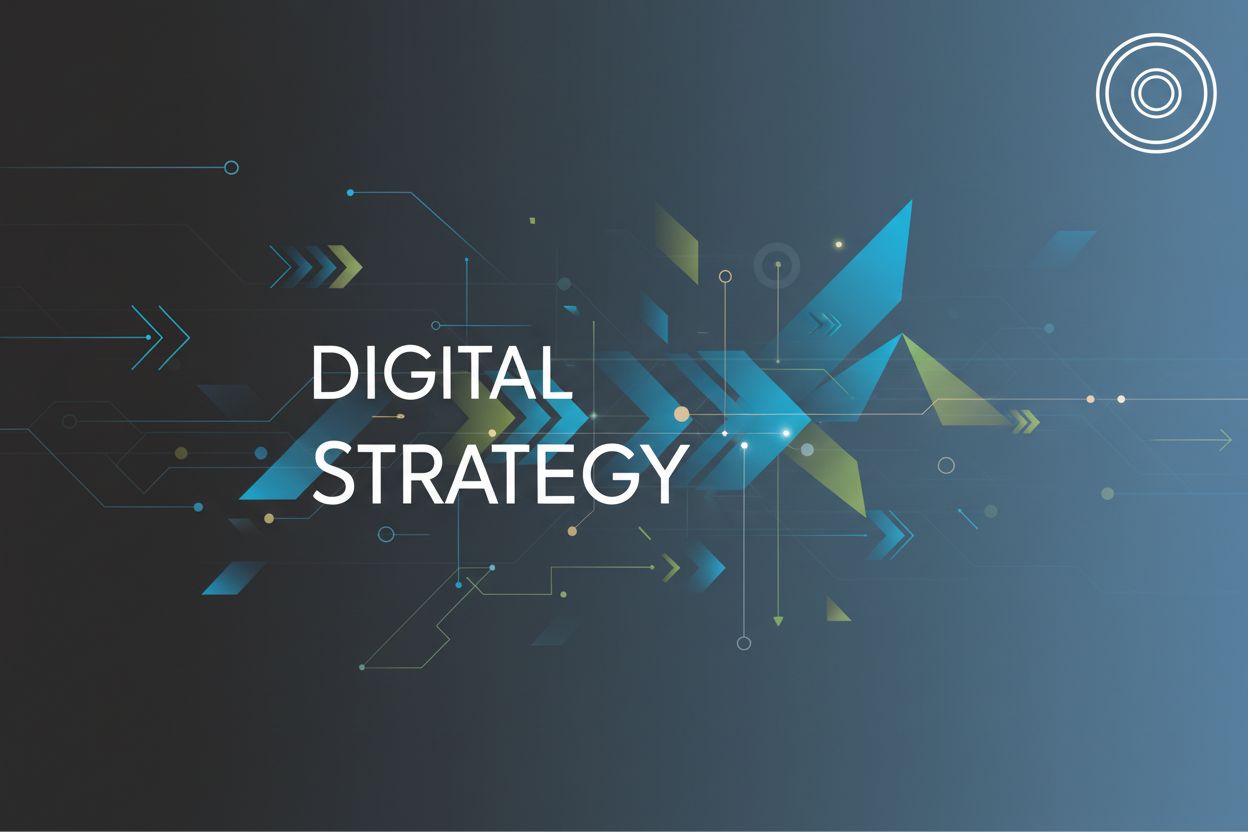The Strategic Goals Framework: An Alternative Approach
TL;DR
Understanding the Limitations of Traditional Strategic Frameworks
Okay, so you're telling me these traditional strategic frameworks are...outdated? Well, it's about time someone said it.
It's like trying to use a map from the 1950s to navigate downtown Tokyo – you're gonna get lost. These frameworks, while foundational, often stumble in today's fast-paced digital world.
Traditional frameworks have some serious limitations:
- They're too slow. The digital landscape changes faster than most companies can run a SWOT analysis, honestly. By the time you've identified your strengths, weaknesses, opportunities, and threats, half of them have probably changed! As ClearPoint Strategy puts it, strategic frameworks are designed to help organizations develop an action plan to achieve their goals. But if your plan takes six months to formulate, good luck.
- They lack a customer-centric view. Porter's Five Forces, for example, focuses heavily on industry structure but often misses the mark on truly understanding customer needs and experiences.
- They're not data-driven enough. Decisions are too often based on gut feeling rather than hard numbers.
Think about a healthcare provider trying to modernize patient care. A traditional SWOT analysis might identify "strong brand reputation" as a strength, but it won't tell you how to leverage ai to improve patient outcomes. Or consider a retailer trying to compete with e-commerce giants. Porter's Five Forces can help assess the competitive landscape, but it won't show you how to build a personalized digital marketing strategy that actually drives sales.
What we need are more agile, customer-focused, and data-driven approaches. As a study from 2024 from ClearPoint Strategy suggests, organizations need to adapt to the changes in the world. This means embracing digital capabilities and technologies, and using analytics to make informed decisions along the way.
So, what's the alternative? That's what we'll explore next.
Introducing the Strategic Goals Framework: A New Paradigm
Alright, so you're probably thinking, "Another framework? Do we really need one?" Honestly, maybe not. But the Strategic Goals Framework offers a different way of looking at things, and it might just click for you.
This framework flips the script a bit. Instead of starting with a massive analysis, it kicks off with crystal-clear, measurable strategic goals. Think of it as setting a destination before you even pack your bags.
- Goal-centric approach: It's all about the goals, baby! Start with clearly defined and measurable objectives. For example, a retail chain might set a goal to increase online sales by 30% in the next year.
- Situational awareness: It's like having eyes in the back of your head. Continuously scan the internal and external environment to stay ahead of the curve. A financial institution might monitor regulatory changes and economic indicators to adjust its investment strategies.
- Actionable strategies: No more vague ideas. Focus on developing concrete steps to achieve those goals. A healthcare provider could implement a new telehealth platform to improve patient access and outcomes.
- Adaptive implementation: Don't be rigid! Allow for iterative adjustments based on performance data. A software company might pivot its marketing strategy based on website traffic and conversion rates.
Traditional models can feel like turning a cruise ship – slow and cumbersome. This framework is more like a speedboat – quick, agile, and responsive.
- Dynamic and iterative: It continuously adapts to changing conditions. It's not a one-and-done deal!
- Data-driven: Decisions are based on analytics and performance metrics. No more relying on gut feelings alone.
- Customer-focused: It integrates customer experience and digital marketing strategies. Put the customer first!
- Collaborative: It encourages cross-functional alignment and stakeholder engagement. Get everyone on board!
So, what's next? We'll get into the core principles of the framework, explaining how it works and why it might be the strategic shake-up your organization needs.
Key Components of the Strategic Goals Framework
Ever feel like your business strategy is more of a suggestion than a plan? Well, you're not alone. Let's dive into the nuts and bolts of making sure your strategic goals actually happen with the Strategic Goals Framework.
First things first: you gotta know where you're going! The Strategic Goals Framework emphasizes clearly defining your goals. We're not talking about vague aspirations; we're talking about SMART goals – Specific, Measurable, Achievable, Relevant, and Time-bound.
- Specifics are key: Instead of "increase sales," aim for "increase online sales by 15% in Q4."
- Achievable: Make sure your goals are realistic given your resources and capabilities. For example, a small business probably shouldn't aim to double its market share in a month.
- Relevant: Ensure these goals mesh with your company's overall vision and mission. If you're a healthcare provider aiming to improve patient outcomes, make sure your goals reflect that commitment.
- Time-bound: Set a clear deadline for achieving your goals. This creates a sense of urgency and helps with planning. For instance, "launch the new product by the end of the fiscal year."
- Prioritization saves the day: Focus on the most impactful goals. A software company might prioritize improving customer retention over launching a new feature if retention is a bigger pain point.
- Stakeholder involvement is crucial: Get input from everyone who has a stake in the game. A financial institution should involve its investment teams, risk management, and customer service to ensure everyone's on the same page.
This isn't a one-time thing, it's a continuous scan of both your internal and external environments. Gotta keep your eyes peeled!
- Internal assessment: What are you good at? What are you not so good at? What resources do you have? What resources are you missing?
- External assessment: What's going on in the market? What are your competitors up to? What new technologies are emerging?
- Data is your friend: Collect it from all sorts of places. Sales figures, customer feedback, market reports – you name it.
- Regular reviews are your lifeline: Don't just set it and forget it. Update your analysis regularly, and ensure it's up-to-date.
Time to put those goals into action! This is where you figure out how you're going to achieve those goals.
- Strategic options: Generate a range of potential strategies. Brainstorm, research, and don't be afraid to think outside the box.
- Feasibility check: Can you actually pull it off? Do you have the resources and capabilities?
- Best strategy selection: Choose the strategies that make the most sense, given your goals and situational analysis.
- Implementation plans: Create detailed plans with specific actions, timelines, and responsibilities.
Once you have these actionable strategies in place, it's important to implement them and measure your progress. Because as Quantive says, strategic frameworks provide unique insights and tools to help your organization navigate the complexities of strategic planning and execution.
So, what's next? Let's dive into the nitty-gritty of adaptive implementation and measurement.
Implementing the Strategic Goals Framework: A Step-by-Step Guide
Okay, so you've got your strategies, but how do you actually do them? It's not as simple as just telling everyone what to do, trust me, I've tried. This step is where you put all that planning into action, and it's gonna get messy – in a good way, hopefully!
First off, you gotta implement those strategies according to your detailed plans. That means assigning responsibilities, setting timelines, and, you know, actually doing the stuff you said you'd do. A good way to do this is to use a project management software; it's not perfect, but it's better than spreadsheets, I guess.
Next, it's important to track your key performance indicators (KPIs) and metrics regularly. Don't just set 'em and forget 'em! Keep an eye on how things are going. A 2025 article from Triskell Software says that strategic planning models help ensure that objectives are actionable, measurable and aligned with the organization’s priorities. So, find the right tools to help you.
And finally, evaluate the effectiveness of your strategies based on performance data, and be ready to make iterative adjustments based on feedback and changing conditions. Things change, markets shift, and sometimes your brilliant plan just doesn't work out the way you thought it would. Remember that the Balanced Scorecard uses four perspectives to provide a comprehensive view of organizational performance.
For example, if you're a retailer launching a new marketing campaign and you notice that online sales aren't increasing, maybe you need to tweak your messaging, try a different channel, or, idk, face the hard truth that your ads are just bad?
Now, how do you keep this whole thing from falling apart? It's all about continuous monitoring, open communication, and a willingness to adapt. Regularly review your progress against your goals, solicit feedback from your teams and customers, and be prepared to pivot your strategies when necessary. This iterative approach is key to long-term success.
Case Studies: Success with the Strategic Goals Framework
Okay, so you're probably wondering if this strategic goals framework thing actually works, right? Well, let's get into some real examples, not just the theory. Think of it like seeing a chef whip up a dish instead of just reading the recipe – makes it a bit more real.
A retail company, for instance, used it to make a big leap into the digital world. They ditched their old way of planning and really focused on clear, measurable goals. They set a specific goal to increase online sales by 150% within 18 months. To achieve this, they implemented a new e-commerce platform, revamped their digital marketing campaigns with a focus on personalized customer journeys, and invested in data analytics to track customer behavior.
- The results? Online sales shot up by 150%. Plus, customers were way happier, and they even cut down on costs. Not bad, huh?
Then there's a tech startup that was struggling to get noticed. They used the framework to find new markets and target their marketing better. Their primary goal was to capture a 40% larger market share in a niche software category within two years. They conducted extensive market research to identify underserved segments, developed targeted content marketing strategies for each segment, and focused on building strategic partnerships.
- What happened? They grabbed a 40% bigger piece of the market, got their name out there, and spent less to get new customers.
And don't forget the manufacturing company. They were leaking money because of old, clunky processes. Their goal was to reduce operating costs by 20% and increase production efficiency within one year. They implemented lean manufacturing principles, invested in automation for key processes, and established a cross-functional team to identify and eliminate waste.
- The payoff? They slashed their operating costs by 20%, cranked up production, and made better products.
See, it's not just some fancy theory. It's about setting goals, knowing where you stand, acting smart, and always adjusting. Ready to see how you can use this in your own business? Let's dive into some tools and technologies that can help.
Tools and Technologies to Support the Strategic Goals Framework
Okay, so you're on board with the Strategic Goals Framework, but how do you actually use it? You're not gonna get far with just good intentions, trust me. You need the right tools!
Data analytics platforms are essential to the framework. Tools like Google Analytics help track website traffic and user behavior, which informs marketing strategies.
Visualization is key, so consider Tableau or Power BI to create interactive dashboards. These platforms make it easier to digest complex data and spot trends.
Project management software, like monday.com or Asana, is a must. These tools help manage projects, assign tasks, and track timelines, ensuring everyone's on the same page.
Trello is another good option for visualizing workflows and managing tasks. It's especially useful for agile teams that need to adapt quickly to changing conditions.
Don't forget the importance of collaboration. Tools like Slack and Microsoft Teams facilitate real-time communication, allowing team members to share ideas and address challenges quickly.
Zoom is also crucial for virtual meetings and presentations, especially if you have remote teams or stakeholders.
So, with the right tech in place, you're ready to implement the Strategic Goals Framework.
Conclusion: Embracing a Strategic Goals-Driven Future
Okay, so you've made it this far, reading about all these different frameworks... but what's the point? It's about making things actually happen, not just planning for the sake of planning.
In today's crazy-fast digital world, companies need to be quick on their feet and really focused on what they want to achieve. The Strategic Goals Framework is like a secret weapon here.
It's all about setting super clear, measurable goals, knowing what's going on around you, and being ready to change things up as needed. If you don't do this, you're basically driving with your eyes closed.
By using this framework, businesses can really get some momentum going in their digital transformations.
Set goals that are crystal clear and actually measurable, so everyone knows what they're aiming for.
Always be on the lookout for what's happening inside and outside your company.
Make sure you're ready to change things up as you go.
Listen, this framework isn't just another thing to learn—it's a new way of thinking about how you do strategy. By using it, you can unleash the potential of your organization and really kill it in the digital age. So, start now and change the way do strategic planning! Consider taking one small step today, like defining one key strategic goal for your team, and see where it leads. The future of your business depends on your ability to adapt and execute effectively.






